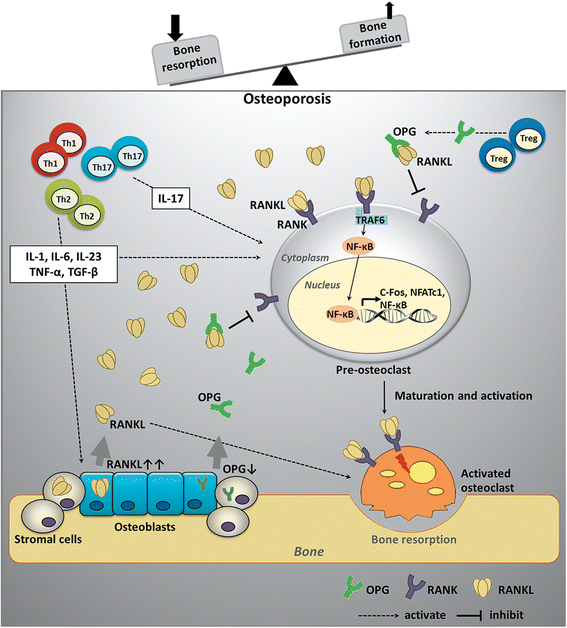Osteoporosis: the current status of mesenchymal stem cell-based therapy
- PMID: 28536615
- PMCID: PMC5414670
- DOI: 10.1186/s11658-016-0013-1
Osteoporosis: the current status of mesenchymal stem cell-based therapy
Abstract
Osteoporosis, or bone loss, is a progressive, systemic skeletal disease that affects millions of people worldwide. Osteoporosis is generally age related, and it is underdiagnosed because it remains asymptomatic for several years until the development of fractures that confine daily life activities, particularly in elderly people. Most patients with osteoporotic fractures become bedridden and are in a life-threatening state. The consequences of fracture can be devastating, leading to substantial morbidity and mortality of the patients. The normal physiologic process of bone remodeling involves a balance between bone resorption and bone formation during early adulthood. In osteoporosis, this process becomes imbalanced, resulting in gradual losses of bone mass and density due to enhanced bone resorption and/or inadequate bone formation. Several growth factors underlying age-related osteoporosis and their signaling pathways have been identified, such as osteoprotegerin (OPG)/receptor activator of nuclear factor B (RANK)/RANK ligand (RANKL), bone morphogenetic protein (BMP), wingless-type MMTV integration site family (Wnt) proteins and signaling through parathyroid hormone receptors. In addition, the pathogenesis of osteoporosis has been connected to genetics. The current treatment of osteoporosis predominantly consists of antiresorptive and anabolic agents; however, the serious adverse effects of using these drugs are of concern. Cell-based replacement therapy via the use of mesenchymal stem cells (MSCs) may become one of the strategies for osteoporosis treatment in the future.
Keywords: Cell therapy; MSCs; Mesenchymal stem cells; Osteoporosis; Stem cells.
Figures

References
Publication types
MeSH terms
LinkOut - more resources
Full Text Sources
Other Literature Sources
Medical

